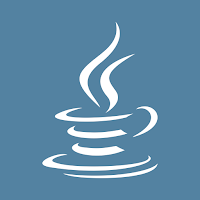Web Application Frameworks To Learn In 2017
Today the world of web is ruled by dynamic applications, gone are the days when HTML and Java Script based websites were enough to allure the people. Though HTML and Java Script still remain the underlining principles of web development, but the need of hour is not just a static website. If we talk about present time and coming time i.e. near future we can clearly find out that people visiting web just want a real life experience that can not be delivered by static website, for that a website needs too be dynamic, robust and interactive.
Dynamic and robust websites are built on Web application frameworks. There are number of frameworks available today booth paid and free, but the most talked abut are free Web application frameworks.
Functions of Web application Framework:
Web application frame works are made to cater wide range of needs of designers and developers.
Here are some of the most powerfull web application frameworks you can use :
1-AngularJS: HTML is great for declaring static documents, but it falters when we try to use it for declaring dynamic views in web-applications. AngularJS lets you extend HTML vocabulary for your application. The resulting environment is extraordinarily expressive, readable, and quick to develop.
2-
Ember.js: Ember makes Handlebars templates even better, by ensuring your HTML stays up-to-date when the underlying model changes. To get started, you don't even need to write any JavaScript.
3-
Express: Express is a minimal and flexible Node.js web application framework that provides a robust set of features for web and mobile applications.
4-
Ruby: Ruby on Rails makes it much easier and more fun. It includes everything you need to build fantastic applications, and you can learn it with the support of our large, friendly community.
5-
ASP.NET: ASP.NET is an open source web framework for building modern web apps and services with .NET. ASP.NET creates websites based on HTML5, CSS, and JavaScript that are simple, fast, and can scale to millions of users.
6-
Laravel: Laravel is a free, open source PHP Web application framework, designed for developing MVC web applications. Laravel is the best overall PHP framework of 2017. Laravel has taken PHP frameworks to the whole new level. Laravel helps you create wonderful applications using simple, expressive syntax, aiming to take the pain out of web development by easing common tasks, such as authentication, routing, sessions and caching. Laravel is well readable and well-documented that helps you speed up your coding.
7-
Zend Framework 2: An open source framework for developing web applications and services using PHP.Zend Framework is a collection of professional PHP packages with more than 112 million installations. It can be used to develop web applications and services using PHP 5.6+, and provides 100% object-oriented code using a broad spectrum of language features.
8-
Django: Django is a high-level Python Web framework that encourages rapid development and clean, pragmatic design. Built by experienced developers, it takes care of much of the hassle of Web development, so you can focus on writing your app without needing to reinvent the wheel. It’s free and open source.
9-
Phalcon: Phalcon is a high-performance PHP web framework based on the model–view–controller (MVC) pattern. Originally released in 2012, it is an open-source framework licensed under the terms of the BSD License.
10-
Symfony: Symfony is a PHP web application framework and a set of reusable PHP components/libraries. Symfony was published as free software on October 18, 2005 and released under the MIT license.
11-
CakePHP: CakePHP makes building web applications simpler, faster, while requiring less code. A modern PHP 7 framework offering a flexible database access layer and a powerful scaffolding system that makes building both small and complex systems simpler, easier and, of course, tastier.
12-
CodeIgniter: CodeIgniter is a powerful PHP framework with a very small footprint, built for developers who need a simple and elegant toolkit to create full-featured web applications.





























